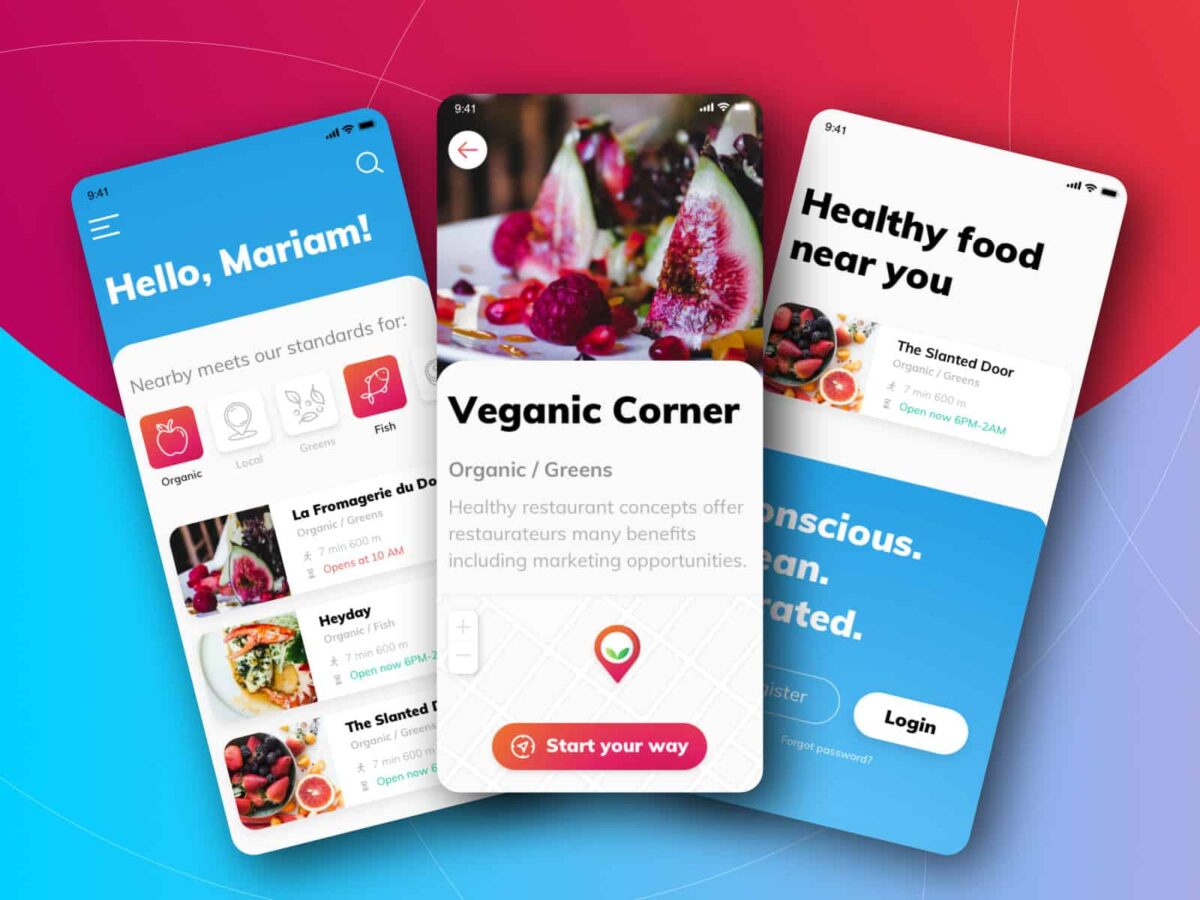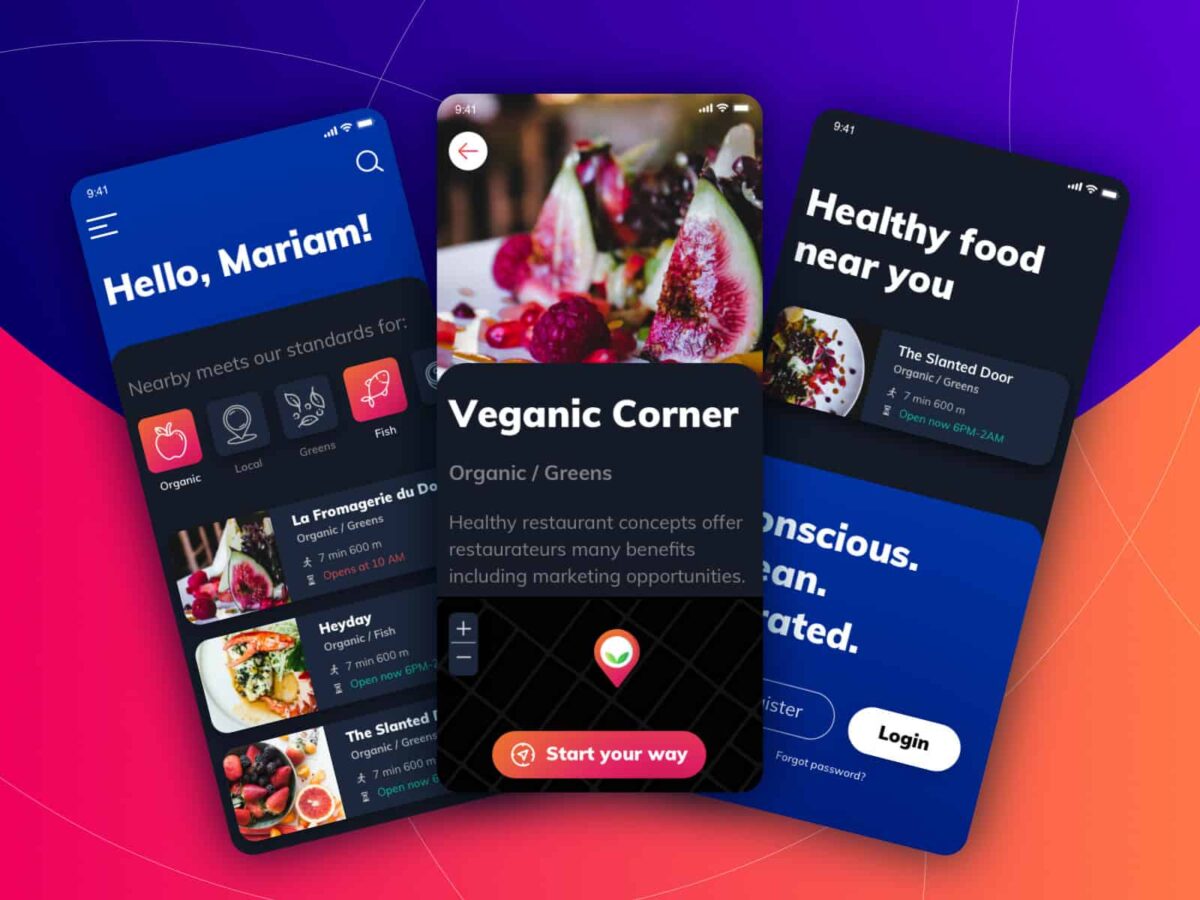From idea to MVP
PROJECT SUMMARY

CHALLENGE
Validate the product idea and plan functionality
PRODUCT
A directory of organic restaurants
DELIVERABLES
We’ve analyzed the business needs, mapped out a product requirements document, created a restaurant database, and prototyped the MVPINTRO
In the beginning, you create the most basic version of your product. It may be simple, but it does the job: move your users from point A to point B.
The next step will be to gather user feedback on your product. Do users like it? If so, you can implement a new feature to improve the product. If not, you need to go back and see what can be done differently. But wait, before developing a set of features, you need to create the product vision and strategy for its further development.

In other words, building a great product requires plenty of research and in-depth planning. But where do you start? Product managers often start with defining a product requirements document. It helps to outline the product’s purpose, value, and behavior.
In this case study, we’re going to showcase how we took our client’s product from an idea stage to developing a scope of a product MVP.
OVERVIEW
Eating healthy while traveling is no easy task. Once you get to the final destination you’ve got to decide where to eat healthily in a foreign city. Our client advocates for a healthy lifestyle. The problem she often encounters is the limited ability to have proper nutrition while traveling. Thus one of the main ideas of the service is to help users quickly access a list of organic restaurants when visiting a new city.
CHALLENGE
The client had an idea to launch a service that would essentially be the directory of all healthy food restaurants. The aim was to find out the product viability while giving equal importance to features.
SOLUTION
There’s a tendency to plunge head into coding without any initial preparation.
At CXDojo, we primarily focus on the business needs of our clients.
Every collaboration, we start with a 1-2 day workshop, where we bring our product development team and the client together to define the product idea, and what we want to achieve. It enables us to map out a custom development strategy for the clients, including MVP releases for testing the product in real market conditions.
We joined this project at the idea stage – a service that will help travelers to access a list of organic restaurants wherever they are. When we stumble upon a challenging idea, we can spend around one week articulating and prototyping our vision. Defining all the product details and business goals can significantly reduce costs during the product development process.
So let’s get to it: before proceeding to developing the product requirements document, there was a need to create a restaurant database. We processed the existing directories with restaurants to compile the initial list of organic restaurants. For example, to speed up the process, we automated our approach to data collecting, structured it, and calculated the so-called restaurant organic score. In this way, we got a list of organic restaurants in the Bay Area. The only thing required from the user was to open the page from this region, and the list of organic restaurants would automatically pull up. To process all the data received, we used a WordPress plugin. It allowed us to collect statistics as well as prioritize features and product improvements.

The first outcome was the database of restaurants that needed to be processed.
The next step was to dive deeper into building an algorithm that would allow us to categorize the restaurants (organic, vegan, meat, fish, local food). To test our idea and verify the client’s assumptions, we created a simple landing page. It helped us learn in real-time how users interacted with a product and which features were used more often.
To capture the vision and product strategy, we used the product vision board. It allowed us to test our assumptions and capture the newly gained insights.

The advantage of using this kind of approach includes a deeper understanding of the product concept, its value for users, and a higher quality final result. By keeping the product vision at the core of our development process, product ideas and features may radically change during the project but the result will be exactly what is needed.
At this point, we understood what our product was and what we wanted to achieve. It was time to go a bit more into detail and add user stories to the product requirements document.

We described each action the user will take in a very concise and objective way. Then we moved on to prototyping the MVP.
Right away, in a simple manner and at almost no cost, we were able to involve as many early adopters as we wanted to participate in our project.
The outcome is the visibility we now have on: what features matter to people and what’s the V (viable) of our MVP, and what is not.
VALUE DELIVERED
Let's create something
awesomeOUR RECENT PROJECTS
 Product launch with agile methodology
Product launch with agile methodology
- social platform
- iterative development
- user testing
- continuous improvement

